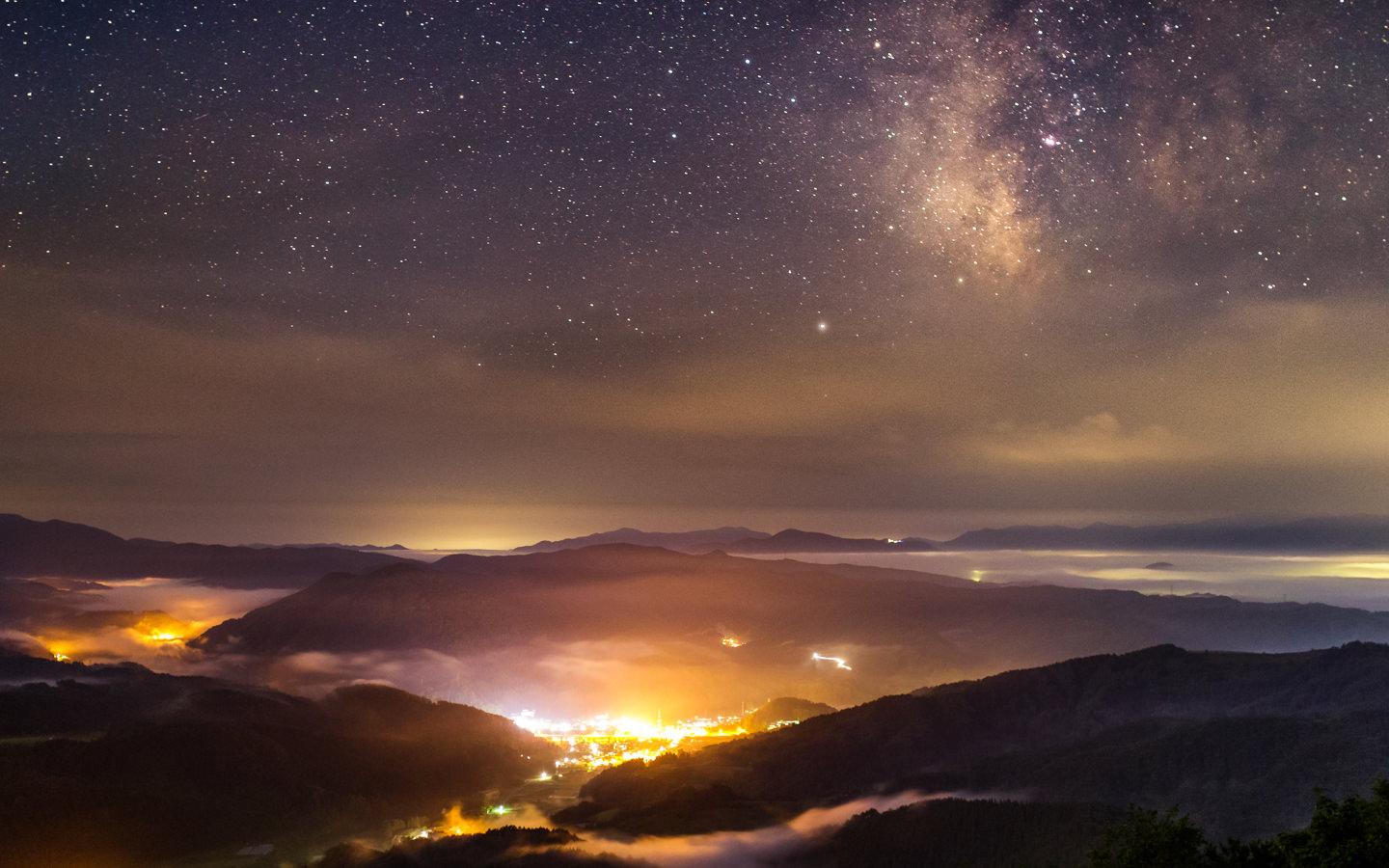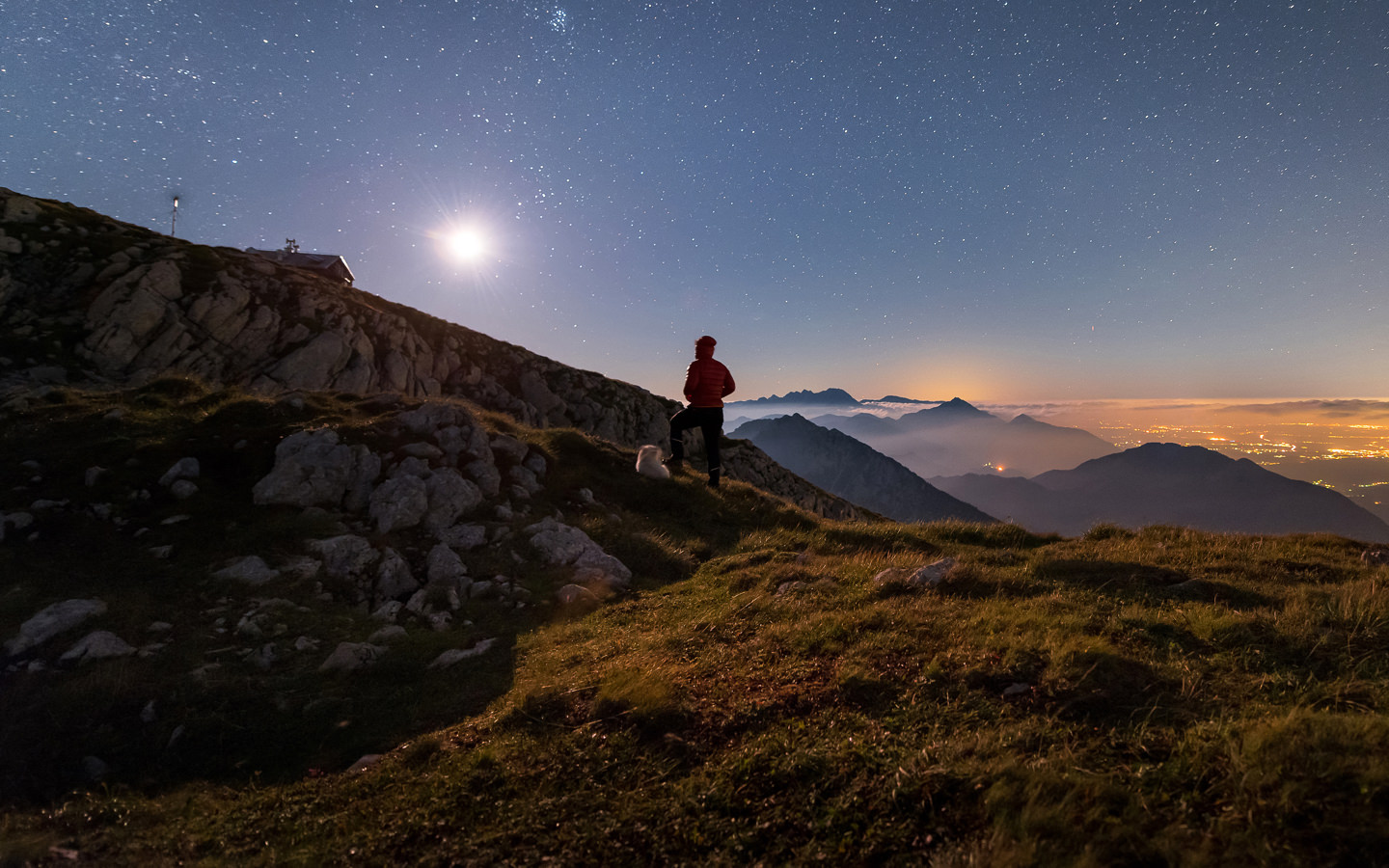If you’re a city dweller, the sight is a familiar one, even if it feels so mundane you may not even be fully aware you’re seeing it. Hong Kong is perpetrator #1. Singapore wins in the country division for this modern day sight. Even small towns experience the phenomenon on a slightly smaller scale. In fact, as populations expand, there are fewer and fewer places on earth where this doesn’t occur. Any guesses?
I’m talking, of course, about light pollution, and while it may seem commonplace in our everyday experience, light pollution is a quickly growing problem with very real consequences. Caused by lights kept on overnight in highly saturated numbers — from your seemingly harmless desk lamp, to streetlights, to entire office buildings left up and running even while workers are away — light pollution is the yellow-tinged sky you see blanketing cities at night, stars obscured, and the twinkle of lights, still viewable from thousands of feet above earth, when you fly high above it on a cross-country red eye.
But besides being a hinderance against your view of the cosmos, light pollution is causing us very real harm, taking an invisible toll on the environment and our health and to combat those effects we need access to exactly the opposite, dark skies (also called dark sites), now more than ever.

The Effects of Light Pollution
Though it may seem harmless, light pollution causes far more issues than simply that unsightly yellow color cast into the sky at night. In fact, our constant exposure to artificial light — and this includes screens of all kinds — has been linked to everything from depression to insomnia to hormonal imbalance. ‘Round the clock exposure to lights, especially those emitting short wavelength blue light (i.e. your phone) has even been found to actually alter your circadian rhythm, also known as your sleep-wake cycle. By constantly being exposed to light, the body’s production of melatonin can be disrupted, making it difficult to get restful, truly restorative sleep.
Many of us are already familiar with the ill effects of loss of sleep, but even if you think you’re getting great shut-eye at night, you could still be suffering. Think, that streetlamp outside your window or your partner’s habit of scrolling before bed, these things may be indirect, but even small amounts of light can permeate the eyelid. This is why many people who prescribe to ‘caveman’ and paleo diets sleep with blackout shades on their windows — to truly be successful in emulating the environment of our ancestors, all light must be blocked out.
Because light pollution is, of course, a product of our modern times. It wasn’t until 1925 that half the homes in the US were lit by electricity, and when put in that context, it’s shocking to think of how quickly we’ve managed to wipe out our view of the stars. One site even describes light pollution as being akin to a giant chemical spill, quickly spreading and causing long-term widespread destruction in its wake. Because light pollution isn’t just about stargazing and getting a good night’s sleep.

Light Pollution and the Environment
Along with wasting valuable energy, money and resources, constant light exposure has been found to have some very damaging effects on animals and the environment. Light pollution can actually disrupt the biological needs of different species, interrupting the natural rhythms of nature. Think of the nocturnal hunters, who rely on the cover of darkness to find their prey. Without true darkness, they’re left exposed and vulnerable.
It’s estimated that over half the species on earth perform their basic functions under the cover of darkness, using nightfall as the signal to get up and go, when that darkness is removed, animals are unable to eat, mate, forage, hunt, and carry out their basic needs. The same melatonin suppression happening in humans is carrying over into the animal world — but it’s not just humans and animals — constant light exposure also alters the growth patterns of plants, making light pollution truly an all-encompassing issue.

The Bright Side
As awareness of the effects of widespread light pollution has grown, a movement to protect remaining dark sites has emerged. Dark sites are locations on Earth with little to no light pollution. From these locations, the true blanket of stars is visible, meteor showers can be viewed and the occasional shooting star can be seen.
More importantly, these sites are a reminder of what our environment was meant to look like and how it was meant to function, without the interference of modern convenience. In these places, plants and animals are free to perform their basic tasks unfettered, and nature carries on as it should. The darkest place in the world is the San Pedro de Atacama region of Northern Chile, a favorite of photographers and adventurers, many of whom are at the forefront of the movement to protect these sites from further human interference.
150 — even just 50 — years ago, finding a dark site was relatively easy, you just drove to the country, but now it’s a little more complicated. In fact, it’s rare for those living in a major metropolitan city to have access to a dark site with 50 miles of their home. Thankfully, conservationists and those passionate about these places have created resources that make it easy to discover a dark sky (or at least a somewhat dark sky) nearby. This Dark Site Finder map displays not just the dark sites left in the world, but also puts into perspective the massive problem of light pollution. Use it the next time you’re in the mood to stargaze (say, this Friday the 13th?) and remember it before you decide to leave your porchlight on overnight. With public awareness and action, it may be possible to reverse some of the effects of light pollution – and these dark skies and dark sites are a reminder of why that is very, very important.
Have you visited a dark site? Have an experience to share? Let us know by tagging us with @AvocadoMattress or #AvocadoGreenMagazine

Shop Pillows
The Essential Organic Pillow Collection
Gentle, breathable, non-toxic support.






